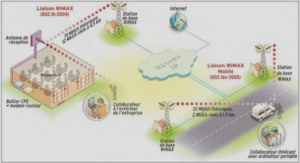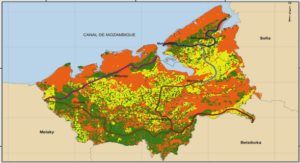Sommaire: Labour Market Adjustments to Real Exchange Rate Fluctuations
List of Tables
List of Figures
1 Introduction
2 Developments in Canada
3 Theoretical Framework, Empirical Speci¯cation and Econometrics
3.1 Theoretical Framework
3.2 Empirical Speci¯cation
3.3 Econometric Issues
3.3.1 Panel Data Analysis
3.3.2 The Chosen Approach
4 Data
4.1 Industry-speci¯c data
4.2 Aggregate data
5 Results
5.1 Hours worked
5.2 Employment
5.3 Wages
5.4 Di®erences across industries
6 Conclusion
Bibliography
A Industries by type of net exposure to international trade
B De¯nitions and data sources
B.1 INDUSTRY-SPECIFIC DATA – KLEMS
B.2 INDUSTRY-SPECIFIC DATA – Labour Force Survey
B.3 AGGREGATE DATA
C Panel Unit Roots
D Cointegration
E Common Stochastic Trend
F Cross-sectional Dependence
G Serial Correlation
H Speci¯cation
I Over-Identi¯cation
Extrait du mémoire labour Market Adjustments to Real Exchange Rate Fluctuations
Chapter 2: Developments in Canada
In the last decade, China’s and India’s rapidly expanding economies have led to strong increases in demand for commodities for which Canada is an important exporter, such as crude oil and base metals. As a result, world commodity prices have risen sharply, reaching historic highs and have contributed greatly to the appreciation of the value of the Canadian dollar (CAD)1. The increase in the Bank of Canada’s Commodity Prices index over the last ¯ve years is the strongest since the 1970s, rising by about 90 percent since 2002. In real terms, however, the increase has only been about 74 percent over the same period. Hence, the Bank of Canada’s Commodity Prices index is currently about 27 percent below its historical peak of 1980. Since Canada is a net exporter of natural resources, the CAD’s value tends to increase when world commodity prices rise.
However, global portfolio adjustments in recent years have also put upward pressure on the Canadian dollar in response to large and persistent U.S. current account de¯cits.
The increase in world commodity prices have resulted in a substantial redistribu-tion of income from net importing countries, like the United States, to net exporting countries, like Canada, as the terms of trade of net resource importers have fallen while those of net resource exporters have risen. The positive income gain for the net exporting countries eventually led to higher production, investment and employment in the resource sector.
During this boom, the Canadian real gross domestic product (GDP) continued to grow at its historical rate, more than 1.2 million jobs were created, and the unemployment rate fell to a record-low of 6.1 percent. These facts suggest that the Canadian economy has adjusted well to the shocks.
……….
Mémoire Online: Labour Market Adjustments to Real Exchange Rate Fluctuations (952.51 KB) (Cours PDF)






